#Te Matatini
Explore tagged Tumblr posts
Text
Today is the Finals day of Te Matatini, and if you’re not watching already you should really tune in! Te Matatini is a kapa haka (Māori performing arts) competition in Aotearoa that’s often called the Olympics of Kapa Haka. The performances are absolutely stunning to watch!! As an American who just learned about this event, it’s been really cool to find out more about Māori culture while admiring some absolutely breath-taking art. It’s available to stream live or watch prerecorded on TVNZ or Haka Translate, with live translations in many different languages available! Even if you miss the live finals today, to my knowledge the competition will still be available to stream for a few more days afterwards. Unfortunately those websites are only available to people in Australia or Aotearoa, but with a little bit of stubbornness and a decent VPN you can watch from anywhere. (I’ve been using the free VPN TunnelBear, with the only downside being that every now and then I run out of free data and have to make a new account.) They also have a donation fund set up to help communities affected by Cyclone Gabrielle, so if you want to donate this is a great place to do that! https://givealittle.co.nz/cause/te-matatini-o-te-aroha
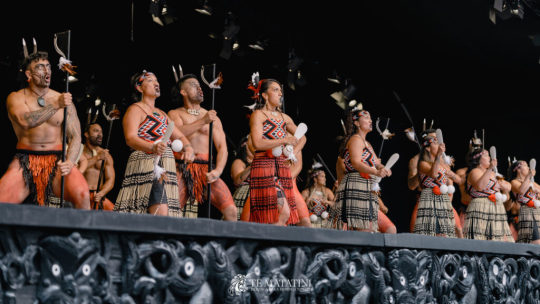
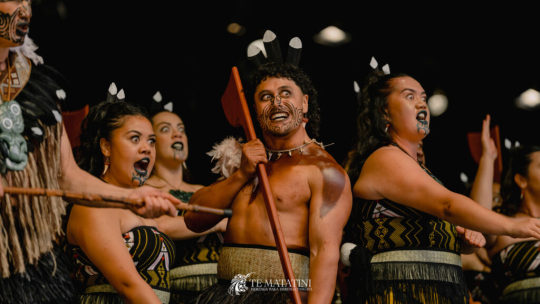
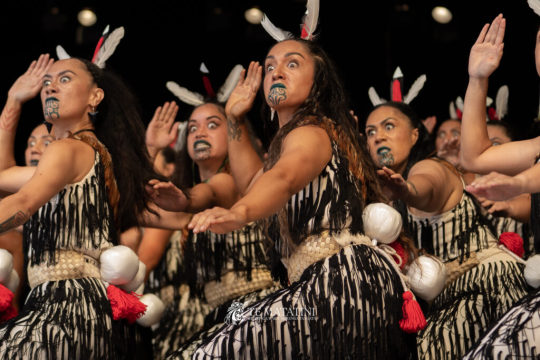
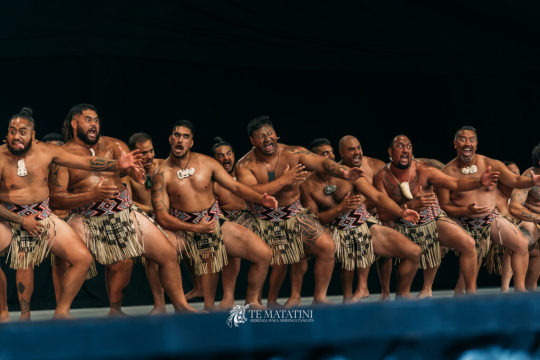
#can’t recommend Te Matatini highly enough!#will definitely be adding it into my rotation of competitions to tune into#te matatini#kapa haka#aotearoa#new zealand#cyclone gabrielle#action item#māori#te ao māori#indigenous#indigenous culture#arts and culture#dance#māori culture#māori performing arts#indigenous performing arts#disaster relief#disaster relief fund#maori#maori culture#maori performing arts#traditional dance#traditional music#music#indigenous music
35 notes
·
View notes
Text

Temuera Morrison and Jason Maoma Te Matatini in Auckland this week!
24 notes
·
View notes
Text
super lucky to be able to watch this live stream from across the ditch - the easiest reconnection to my past self
there's 2 days left and finals are tomorrow 🥰
4 notes
·
View notes
Text
it's te matatini week *insert pukana emoji
#c's vents.#i always love when te matatini comes around.#im reminded of how beautiful my culture and ppl are.#it also makes me miss kapa haka so much.#performing as a part of a roopu is truly a different kind of seretonin
1 note
·
View note
Text

Review -After many a postponement, for the first time since his debut world tour in 2017, Grammy award winning artist Harry Styles touched down at Mt Smart Stadium, bringing Harry Styles: Love on Tour to Tāmaki Makaurau.
Released in 2022 and recently awarded Album of the Year at the 2023 Grammys, Harry's House, built in London by way of Hollywood, Malibu, and Wilshire, and engineered by the likes of Kid Harpoon, Tyler Johnson, and Samuel Witte has seen almost every major city of the world. It's only fitting that, at long last, Aotearoa finally got a taste of the artist's highest acclaimed album.
Decorated from head to toe in sequins, sparkles, cowboy hats and the coveted feather boas, punters, who had been lining up as early as two days before the concert itself, descended on Mt. Smart Stadium bright eyed and bushy tailed, eager to get as close to Styles as they possibly could. His charm, wit and general crowd interaction is a major selling point of the tour itself - something all 47,000 attendees were eager to get a taste of.
Aotearoa's own Ny Oh and Isle of Wight-based band Wet Leg opened the show, to a crowd that, although mixed in demographic, got behind every single beat. Seeing Wet Leg at Mt Smart was a bit of a big deal; the last time they were here, they performed to a sold-out Tuning Fork - a venue which can hold up to 300 people. Fast forward eight months, playing to a sold-out stadium, comprising a crowd who, for the most part, know every word to every song, is something to marvel at.
I always admire an artist who has an impeccable pre-show playlist - it shows that not only do they know their crowd well, but when done right, the right selection can show that they know the city, or in this case, country, well too. Classic tracks such as 'Best Song Ever' by One Direction and 'Bohemian Rhapsody' by Queen had the crowd doing vocal somersaults over one another, singing as loud as they could.
What took me by surprise was the addition of Poi E by Pātea Māori Club - released in 1983, sung entirely in te reo, now playing to a crowded stadium before Harry Styles of all people graced the stage. He knew his crowd, and where he was in the world, extremely well.
Styles is known for his on-stage outfits. Some are understated, some are extremely overstated, and most, if not all of them, end up being one of the main focal points of every performance. The last time he was in Aotearoa, he wore an all-black suit, assumingly paying homage to the All Blacks. Last night, he wore a short sleeve raglan tee with a bejewelled whale's tail adorning it, with a pair of purple dress pants. Not the most spectacular outfit compared to his recent Australia tour, but we'll take what we can get.
After all, fashion comes second when you're stood mere metres from One Direction's Golden Child.
It's always special when an artist comes to any given country and does more than just plays their show and jump on the next flight home. On his recent Australian tour, Styles immersed himself in the culture of the Aboriginal peoples of Australia, and his stop in Aotearoa was no exception.
At his first break in the show, Styles, who, earlier in the day, had spent time with Te Matatini finalists, Angitū, sang the start of 'Tūtira Mai Ngā Iwi' - written by Canon Wiremu Te Tau Huata in the 1950s.
The crowd, clearly stunned, sung the rest of the waiata back to him without hesitation while he danced around the stage. He continued to do this multiple times throughout the night, which kept the crowd on their toes. I was almost waiting for it to happen every time he got the chance to speak. At one point in the concert, he picked a Tino Rangatiratanga flag from the crowd, and put it on his mic stand - the flag found itself to be a permanent fixture on the stage for the rest of the night.
The moments of the concert I remember the most vividly seem to be the same at almost every one I go to; the times when the whole crowd is still, flashlights up, yelling the lyrics of the saddest songs back at the person singing them - and last night was no exception. At the end of the catwalk which spanned what felt like ten trillion miles, Styles performed 'Matilda', 'Little Freak', and 'Satellite' one after the other, and for all three songs, I've never heard a crowd with so much gusto.
Harry performed songs from across all three released bodies of work, such as 'Woman', to 'Golden', and even far back as a new rendition of One Direction's seminal hit, 'What Makes You Beautiful'. He even snuck in crowd-favourite unreleased weapon, 'Medicine' which went viral during the tour for his last album, Fine Line. During every song, the crowd didn't hold back. So much energy in one space - it was amazing to bear witness to.
It's crazy to think that, from Harry's end, there are 47,000 people in the same space as you are singing the words to the music you wrote back at you. Those moments stick with an artist - I feel as though they stick with the crowd for eternity.
Crowd interaction is paramount for an artist as big as Styles. Throughout his time as a solo performer, he's always placed a large emphasis on connecting with his crowds, and as he's grown, the interactions have only evolved to be more intense.
Last night was no exception. From pointing out a fan who had been throwing fruit at him (which then proceeded to him singing a two-minute-long song about people dressed as bananas, eggs, aubergines, so on and so forth), the singer, who encourages fans to bring signs with him to his shows, went back and forth with two fans. One, who allegedly sold their cats leg to be at the show, and the other, who was with her best friend going through a breakup. After finding out the now ex-boyfriend wasn't prioritising them, hence the breakup, he told the crowd to "not be a Michael, be a Romy!"
Styles also asked the crowd about the census, telling everyone that he too had filled it out prior to the show.
Finishing with crowd favourite, and aptly named, 'Kiwi', Styles had made the nights of 12-year-olds with their parents and mid-40-year-olds alike, as well as everyone in between. Harry Styles is truly an artist who transcends all levels of musical talent and incomparable wit, with a hint of charm that can't be matched.
The remnants of the 47,000 plus feather boas will live on the field of Mt Smart Stadium until Harry Styles makes his triumphant return to Aotearoa.
Admittedly, he doesn't actually know when that will be. All he knows is that he hopes it won't be too long.
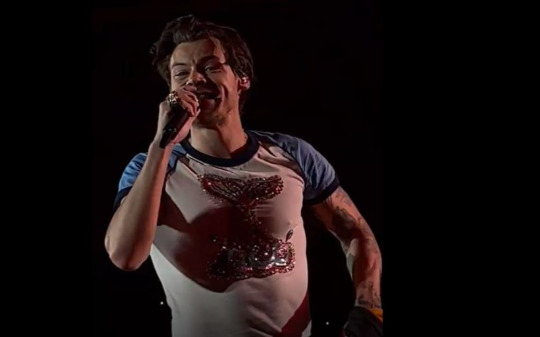
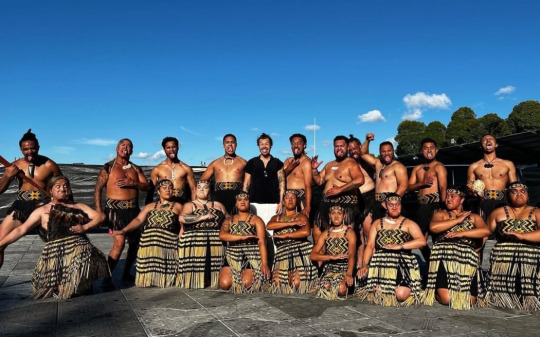
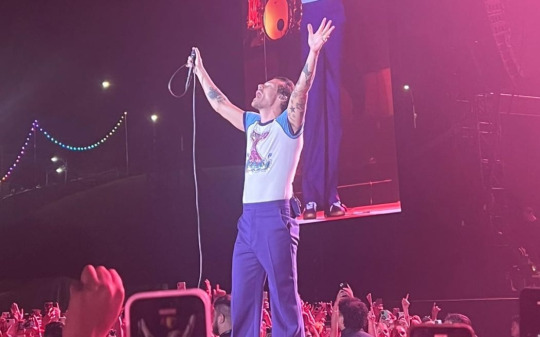
60 notes
·
View notes
Text
If y'all wanna see how diversity and inclusion in gender and sexuality can be shown through a Maori lens, this is a great example! My whanau is in this group and they're absolutely wonderful :) have a haka about homophobia as well that I'll post eventually
#kapa haka#matatini#maori#poi#angitu#also watch matatini in general it's fucking fire this year#takatapui
23 notes
·
View notes
Text
it’s also worth noting that Angitū is the first (and i think only) kapa haka group to have Takatāpui involved in both gendered aspects of their performance at Te Matatini this year so of all the groups Harry got to meet, I’m so glad it’s them
#idk how to explain it’s the best way i can word it#but honestly love that for them#love that for HIM tho you can yt their performance and see why they got into finals
6 notes
·
View notes
Note
Another super nice article about Harry from New Zealand. «Harry Styles is truly an artist who transcends all levels of musical talent and incomparable wit, with a hint of charm that can't be matched.» And also (compare and contrast with LT...): «What took me by surprise was the addition of Poi E by Pātea Māori Club - released in 1983, sung entirely in te reo, now playing to a crowded stadium before Harry Styles of all people graced the stage. He knew his crowd, and where he was in the world, extremely well.» «It's always special when an artist comes to any given country and does more than just plays their show and jump on the next flight home. On his recent Australian tour, Styles immersed himself in the culture of the Aboriginal peoples of Australia, and his stop in Aotearoa was no exception. At his first break in the show, Styles, who, earlier in the day, had spent time with Te Matatini finalists, Angitū, sang the start of 'Tūtira Mai Ngā Iwi' - written by Canon Wiremu Te Tau Huata in the 1950s.» www rnz co nz/news/national/485515/review-harry-styles-love-on-tour-at-mt-smart-stadium
What a fantastic write up! Louis did absolutely nothing to acknowledge Aborginal culture at his shows. When asked what he liked best about Australia, the vacuous clown replied 'you can have a great night out here.' One track mind.
2 notes
·
View notes
Text
tem and jason momoa at te matatini yestersay fuckin represent
6 notes
·
View notes
Text
Te Matatini Herenga Waka Herenga Tangata 2023 - Auckland, New Zealand | 23 Feb, 2023.
Find out more / Get Tickets now.
2 notes
·
View notes
Text
Aotearoa Photographers for each day of the Week:
Day 4
Erica Sinclair
I'm Erica - a freelance photographer and many other things. When I'm not busy with my whānau or talking on Taringa podcast, I'm behind the camera capturing the beauty of kaupapa Māori. My specialties include: photographing Iwi, Hapu & Marae based projects or commercial, branding, advertising, archival, and even stock photography. And, as an avid lover of the outdoors and the moana, I'm always excited when my work allows me to meet new people, learn new things and shoot in stunning, fresh scenery. With 10 years of experience as a photographer, and a Bachelor of Media Arts degree under my belt, I'm pleased to say that I run my own business and have a loyal clientele who appreciate my passion for kaupapa Māori.
Taken from the about me page on her website
Ko wai ahau? — Erica Sinclair Photography. (n.d.). Erica Sinclair Photography. Retrieved September 4, 2024, from https://www.ericasinclairphotography.com/ko-wai-ahau
Erica Sinclairs website showcases the categories of people, place and purpose. She captures the human emotion and the Māori beauty. She is a versatile photographer, her portfolio includes portraits, landscapes with themes of connection, time and home.
Waititi Whanau for Morning Calm Magazine. Erica Sinclair Photography, Māori Photographer.
Tarawera River. Long exposure photography Erica Sinclair Photographer, Māori Photographer
Te Pou o Mangatawhiri, Te Matatini Society Inc. Auckland 2023 Erica Sinclair Photography, Māori Photographer.



0 notes
Text
Fwd: Graduate position: UWaikato_NewZealand.InsectEvolution
Begin forwarded message: > From: [email protected] > Subject: Graduate position: UWaikato_NewZealand.InsectEvolution > Date: 20 August 2024 at 05:11:21 BST > To: [email protected] > > > > Graduate position > > About this opportunity: > > To cope with ever-changing environmental conditions, insects produce > cuticular hydrocarbons (CHCs), waxy lipids secreted onto their cuticle > that prevent desiccation. However, these CHCs also act as pheromones > crucial for communication during mating and contests. Given that CHCs > function both as a barrier between an insect and its environment and to > convey messages during sexual interactions, they provide an ideal trait > to investigate the interaction between natural and sexual selection. How > these selective forces interact to shape the evolution of CHCs is poorly > known, especially under climate change. > > Using an endemic beetle, pepeke nguturoa (the New Zealand giraffe > weevil), found across most of Aotearoa New Zealand, this PhD project > will investigate the role of CHCs in sexual signalling and the trade-off > between desiccation resistance and communication using behavioural > experiments in the lab and field in combination with the use of analytical > chemistry techniques. > > We are looking for a candidate that has: > > - A strong background in at least one of: behavioural ecology, > evolutionary ecology, chemical ecology. > - Experience or an interest in ecological field work and/or laboratory > based experimentation > - Experience or an interest in learning GC-MS analytical techniques > - Strong statistical analytical skills (preferably in R) > - Excellent communication skills in English (written and spoken) > - An open mind and willingness to learn and work in a team > - A full drivers license > > Location: > > The candidate will be based at the University of Waikato in > Kirikiriroa/Hamilton under the Chief Supervision of Dr Chrissie Painting, > and co-supervised by Dr Megan Grainger (University of Waikato), PD Dr > Florian Menzel (Johannes Gutenberg University of Mainz, Germany) and > Professor Leigh Simmons (University of Western Australia, Australia). > > Scholarship Value: > > This is a fully funded University of Waikato Seeker Scholarship PhD > position for 3 years (an annual stipend of NZD$30,000, plus tuition fees). > > We encourage both international and domestic students to apply for this > position, which will be based in the Invertebrate Behavioural Ecology > lab at the University of Waikato in Kirikiriroa/Hamilton, Aotearoa New > Zealand. Kirikiriroa is a relatively small but vibrant town to live > and work, offering a fantastic mix of rural and city life. It is also > centrally located in the North Island of New Zealand, making it a great > base from which to travel the North Island. > > The successful student would start by June 2025. > > Interested candidates should send applications as a single PDF document > comprising 1) a letter of motivation that clearly outlines your > interest in the advertised project, 2) a curriculum vitae, including > scientific publications if applicable, 3) academic transcripts, and 4) > contact details for two academic references to Dr Chrissie Painting > ([email protected]). The advert will remain open until > the position is filled, with applications reviewed from end of September > 2024. Feel free to contact Chrissie with any inquiries about the project. > > Dr Chrissie Painting (she/her) > Senior Lecturer > Te Aka Mātuatua - School of Science > Environmental Research Institute > Principal Investigator at Te Pūnaha Matatini > (Centre of Research Excellence) > Senior Editor of the > New Zealand > Journal of Zoology > Associate Editor at > Insect Conservation & Diversity > Ph: +64 7 837 9639 > > [email protected] > Painting > Lab website| > University > web profile > > Chrissie Painting
0 notes
Text
Jimmy Nelson's Photograph of Pita Sharples at Te Matatini
Jimmy Nelson’s photograph of Pita Sharples at Te Matatini is one of many examples of when the ethical boundaries of photography are crossed by a photographer. In his photobook, “Before They Pass Away”, Jimmy Nelson captures the image of many indigenous communities from around the world. One of these images includes Pita Sharples while at Te Matatini. Captured in kapa haka gear and temporary ta moko. This misrepresentation will make people from other sides of the world, who are not familiar with Māori people, may think this is how they are dressed everyday 24/7. Similarly I am not familiar with the indigenous people of other countries, so seeing Jimmy Nelson’s representations of these communities could confuse myself and other people into thinking this is how they dress and live everyday. Nelson chooses to create false narratives of indigenous communities, staging these photoshoots so that he can make a profit from appearing to care about these communities rather than sharing the truth. Although I am not an indigenous person, I did find the title of the exhibition to be a bit odd. This sentiment is agreed by many other indigenous people. Nixiwaka Yawanawá, a member of the Yanawana tribe in the Amazon rainforest says that
“As a tribal person I feel offended by Jimmy Nelson’s work ’Before They Pass Away’. It’s outrageous! We are not passing away but struggling to survive. Industrialised society is trying to destroy us in the name of ‘progress’, but we will keep defending our lands and contributing to the protection of the planet.”
I think as a photographer, especially those who specialise in portraiture, we have obligations to respectfully and correctly represent the people we take photographs of. If we do not, I think this crosses the ethical boundaries as we profit from these false narratives of actual living people and their communities.
0 notes
Text
Jimmy Nelson's work has been lauded for its aesthetic value and celebration of cultural diversity, but it has also sparked debate about photographic ethics, cultural reproduction and participant consent. In particular, his photograph of Maori leader Pita Sharpless at Te Matatini provides an interesting case study for discussing the ethics of photography. It highlights the issues surrounding the romanticisation and potential misrepresentation of Indigenous cultures, while emphasising the importance of photographing these communities accurately and respectfully. The commentary highlights the need for photographers to obtain informed consent, engage in collaborative storytelling, and recognise the contemporary realities and resilience of indigenous peoples. The balance between artistic vision and ethical responsibility in photography was emphasised.
0 notes
Text
Jimmy Nelson SDL
Pita Sharples at Te Matatini
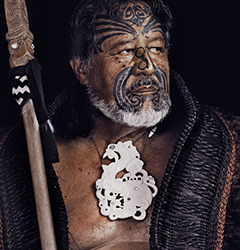
Debate the ethics of taking portraiture
I think the most important part of taking a photograph is consent. Obviously, without it, that would be illegal in most places. For this particular instance, you can tell that Sharples has consented to this photograph being taken otherwise he wouldn't be in a studio in his cultural attires. However, I think Sharples was misled into believing what the photograph was used for, and therefore wasn't able to give informed consent. It was Nelson's job to inform Sharples about all of his intentions with the photograph, and he should have done this with everybody else he photographed, otherwise he should never have taken those photographs.
0 notes
Text
Week 4 - Jimmy Nelson Critique
For our SDL, we were tasked to look at Jimmy Nelsons Before They Passed Away. On his website, he says, "It captures the customs and traditions of indigenous communities who have managed to preserve their heritage within our increasingly globalised world." The work is controversial, and people from said indigenous communities disagree with the way he has portrayed them.
Firstly, his choice of name is offensive to these communities as they're not dying out but struggling to survive. To choose a name like this diminishes all the work they have done to preserve their cultures against those who seek to wipe them away. It feels patronising and him projecting a narrative he wanted to portray.
It also sounds like the portrayal of the different communities was not accurate. For example, Benny Wenda says that what Jimmy said about them is not true, that his people, the Dani people, were not headhunters, and it was never their tradition. This makes me question the legitimacy of his portrayal and the stereotypes he has used. Another point is that people who are not familiar with particular cultures will create a false impression.
A particular photo close to home is the photo of Pita Sharples at Te Matatini. The Maori culture here in Aotearoa, NZ, is definitely not dying out. And so, to include this in his narrative is offensive. According to an article in the NZ Herald, Sharples says the photos were highly staged and stylised. Which further makes me doubt the legitimacy and integrity of the photography. To portray cultures that don't get the recognition they deserve but then to do it in an inaccurate and offensive narrative is unethical, to say the least.
To conclude, it is the responsibility of us as photographers to understand the people we are portraying. We must take into consideration the cultural implications of our work when portraying a culture that is not our own. We should not follow stereotypes and change elements of a culture to suit our narratives as this just leads to false and patronising portrayal. It also just continues offence or incorrect ideas of cultures already struggling with the correct portrayal. It should be up to the culture how they should be portrayed, and to not show respect by not learning about/following the ideas of the culture lacks moral duty as a photographer. As a tougher, I need to make sure I research and talk to the culture I'm photographing. Learn how they want to be portrayed.
0 notes